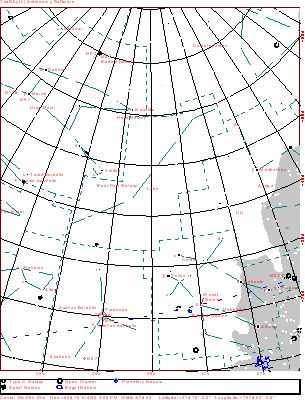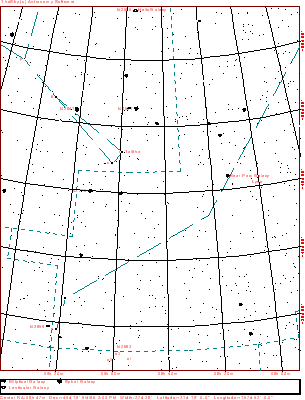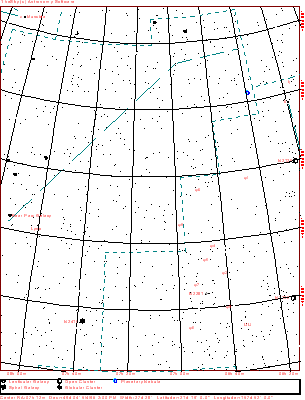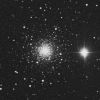
| Home | Deepsky Atlas | TheAstronews | Links | Solar System | ||||||

Hawaiian Astronomical SocietyConstellations: Lynx |
||||||||||

Click the map for a 909x1199 version of the above. Click here for a map better suited for use in the field.

This a more detailed view of the constellation. The map displays stars to magnitude 10, and deepsky objects to magnitude 12. Click here for a map better suited for use in the field.

Click here for a map better suited for use in the field.
 49k JPEG NGC2683 (Best 67) is an edge on spiral galaxy located in southern Lynx, 55' north of Sigma 1 Cancri. Dreyer describes it as very bright (mag. 10.4), very large (9.3'x2.2'), and very moderately extended in p.a. 39°. It brightens gradualy, but very much toward the middle. This galaxy shows details in a 10" and benefits from relatively high magnifications. 49k JPEG NGC2683 (Best 67) is an edge on spiral galaxy located in southern Lynx, 55' north of Sigma 1 Cancri. Dreyer describes it as very bright (mag. 10.4), very large (9.3'x2.2'), and very moderately extended in p.a. 39°. It brightens gradualy, but very much toward the middle. This galaxy shows details in a 10" and benefits from relatively high magnifications.
Image by Jerry and Wanda Mulchin, taken on a 10", f6.3 SCT with an SBIG ST-8 camera.
|
 22k JPEG NGC2419 (Caldwell 25) is a globular cluster described as fairly bright (mag. 10.4), and fairly large (4'). It contains no stars brighter than mag. 17, and cannot be resolved in amateur scopes. How did this least resolvable of globulars make the Caldwell list? It is the most distant globular that belongs to our galaxy. That said, at 210,000 light years, it sits farther out than the Large Magellanic Cloud. Located 7° north of Castor (Alpha Geminorum), it sits in a sparse area of sky. A mag. 7 star sits 4' west of the cluster. Image from the Digital Sky Survey. 22k JPEG NGC2419 (Caldwell 25) is a globular cluster described as fairly bright (mag. 10.4), and fairly large (4'). It contains no stars brighter than mag. 17, and cannot be resolved in amateur scopes. How did this least resolvable of globulars make the Caldwell list? It is the most distant globular that belongs to our galaxy. That said, at 210,000 light years, it sits farther out than the Large Magellanic Cloud. Located 7° north of Castor (Alpha Geminorum), it sits in a sparse area of sky. A mag. 7 star sits 4' west of the cluster. Image from the Digital Sky Survey.
|
If you have any questions about the Hawaiian Astronomical Society
please
(link requires javascript).